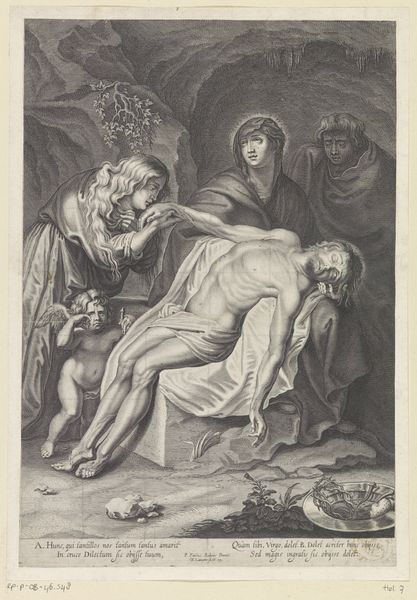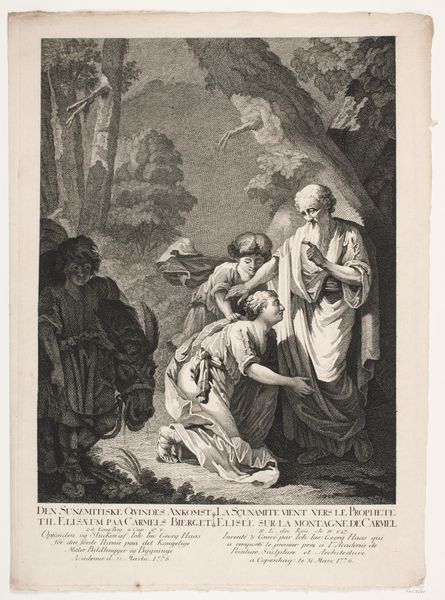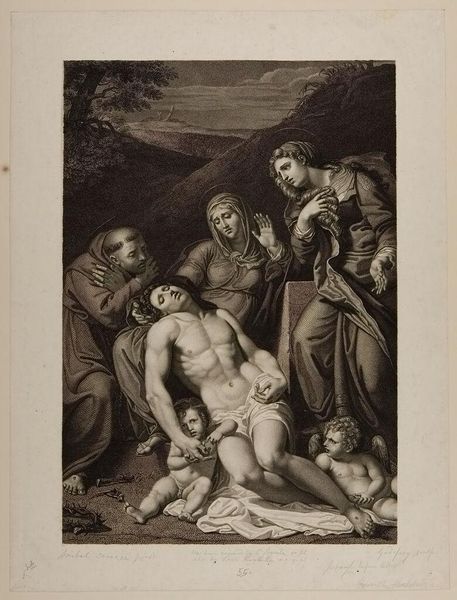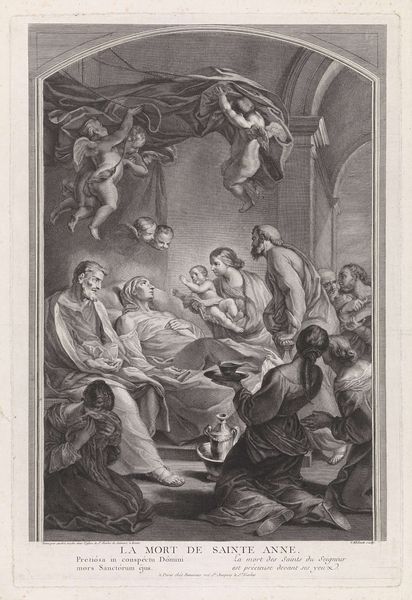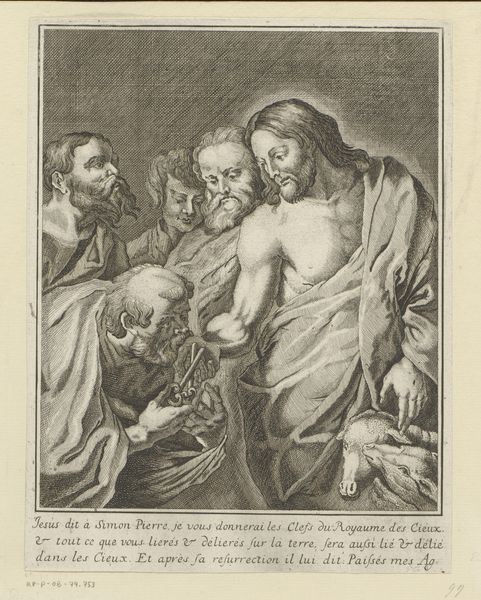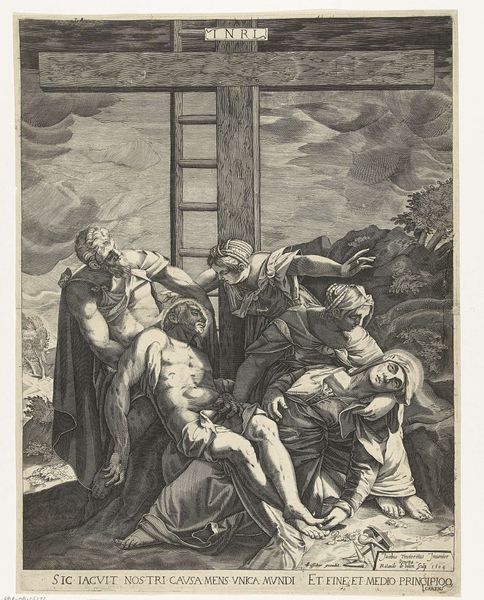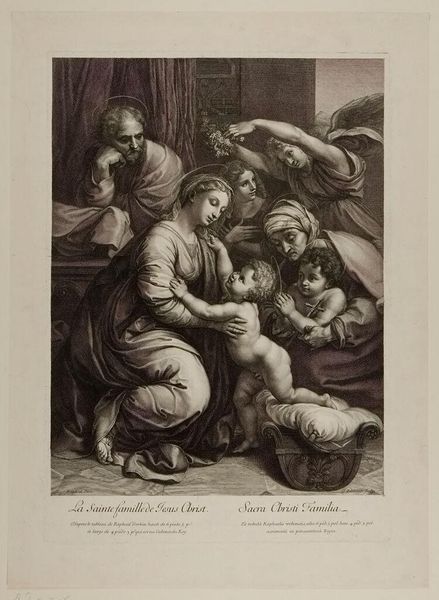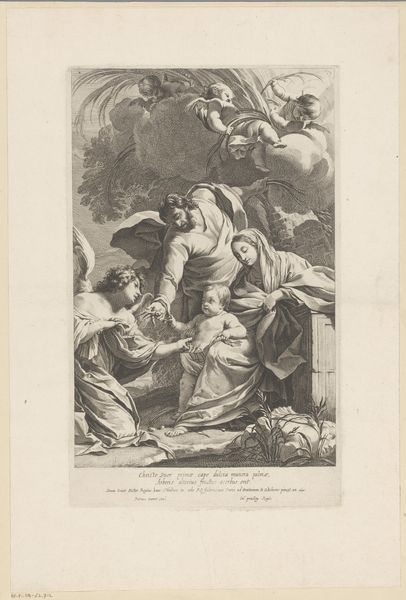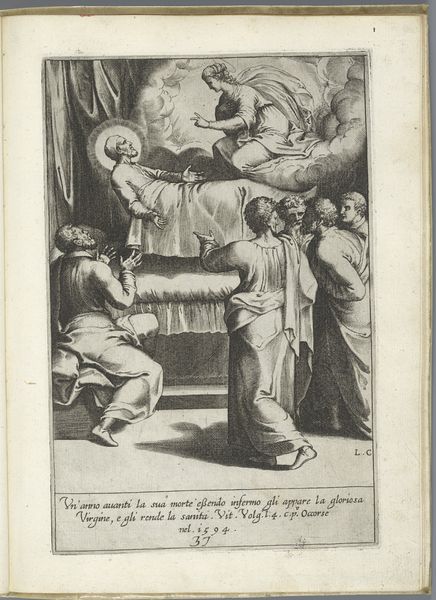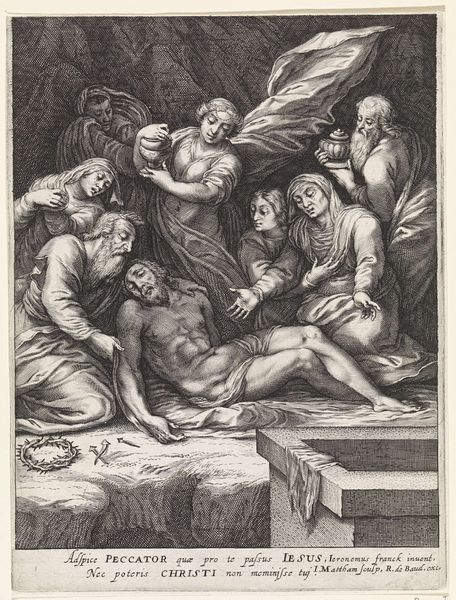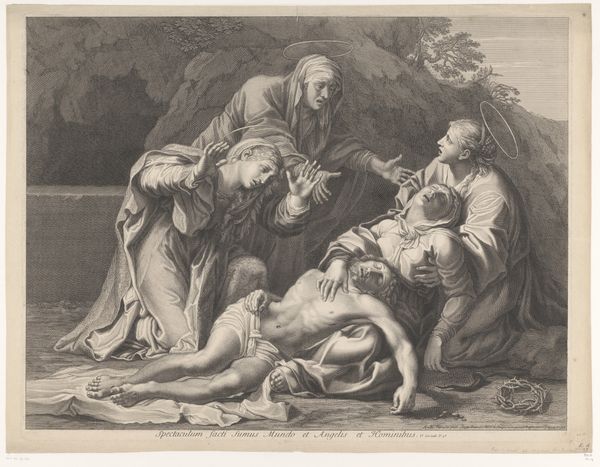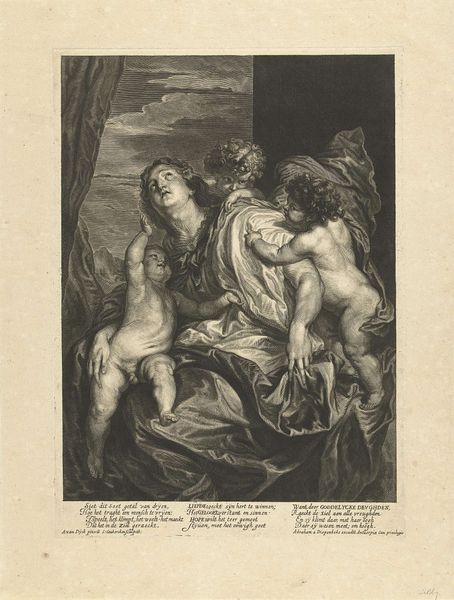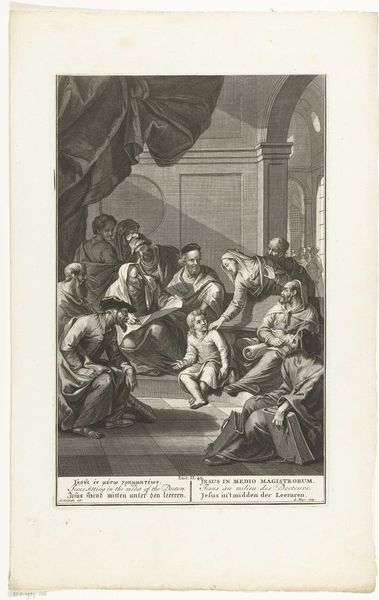
print, engraving
#
baroque
# print
#
old engraving style
#
figuration
#
history-painting
#
cartoon carciture
#
engraving
Dimensions: height 362 mm, width 230 mm
Copyright: Rijks Museum: Open Domain
Curator: Here we have "The Entombment of Christ" or "Graflegging van Christus" by Matthijs Pool, thought to be made sometime between 1705 and 1728. Editor: It's somber, naturally, with that dense, almost claustrophobic arrangement of figures huddled around Christ's body. The contrast between light and shadow really enhances the drama. Curator: Absolutely. Note the meticulous use of line, typical of engraving as a medium during the Baroque period. The composition centers on the diagonal formed by Christ's body, directing our gaze from the lower right to the upper left. Semiotically, the discarded crown of thorns near Christ’s feet becomes the ultimate signifier of the Passion and ultimate sacrifice. Editor: The political dimensions of such a scene cannot be overlooked, even centuries later. Depicting the vulnerability and humanity of Christ challenged existing power structures by portraying the divine brought low by state-sanctioned violence. Curator: Indeed, though the formal language lends itself to interpreting such vulnerability as essential to Baroque aesthetic sensibilities. Observe how Pool utilizes chiaroscuro, pushing the limits of the medium to create dramatic effect by using intense darks and vibrant light. Editor: While this image certainly emphasizes visual impact through composition and lighting, the scene evokes emotional complexities regarding grief, suffering, and solidarity under oppression. How can viewers today connect this Baroque religious scene to their lives, finding solace or inspiring empathy through similar human experiences? Curator: I’m struck by how the linear quality contributes a textural element too; each mark deliberately placed. One also needs to account for the symbolic content within a Christian theological framework; the subjects express intense religious devotion surrounding the burial. Editor: But how does it speak outside those narrowly prescribed frameworks? As our cultural narratives shift, shouldn't the artistic interpretation consider a variety of lenses? The very act of physically laying the body to rest in an act of tenderness transcends traditional religious confines and invites reflection regarding the value of lives beyond ideological difference. Curator: Perhaps. Ultimately, Matthijs Pool masterfully crafted a moment that captures eternal ideas using refined printmaking practices; as the saying goes, death and taxes! Editor: Leaving us to reflect on how historical narratives intersect with the persistent human conditions we experience and attempt to understand across the ages.
Comments
No comments
Be the first to comment and join the conversation on the ultimate creative platform.
